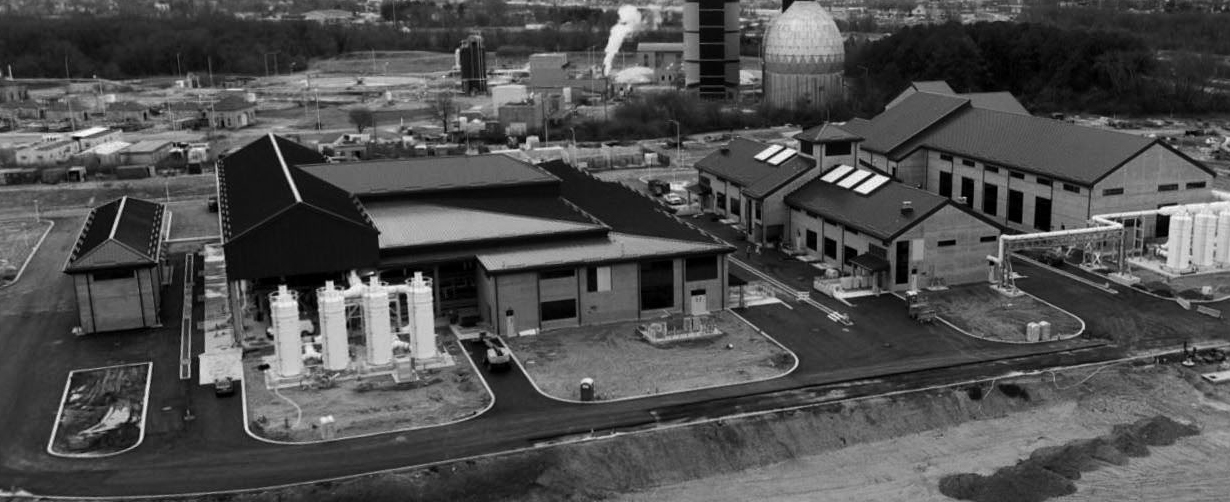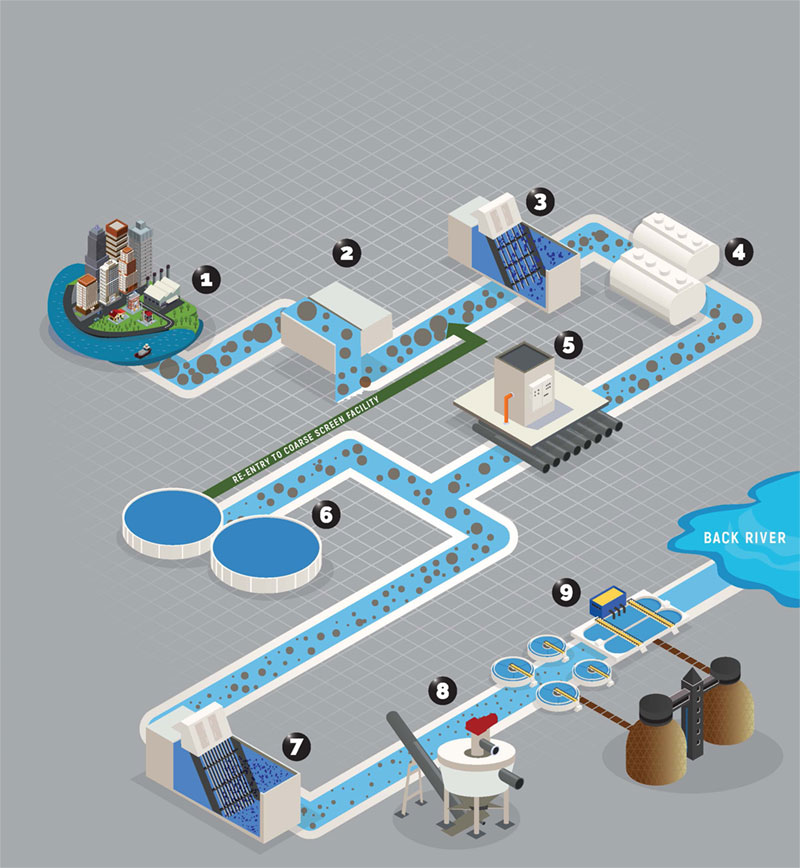Awesome. I have it.
Your couch. It is mine.
Im a cool paragraph that lives inside of an even cooler modal. Wins
×The HEADWORKS PROJECT
An Investment in a Cleaner Baltimore

How The Headworks Wastewater Pretreatment Facility Works

WASTEWATER PRETREATMENT PROCESS
- Baltimore City & County Residential/Commercial/Industrial collects, conveys, and treats water that contains human waste and other waste from residential, commercial, and industrial buildings and facilities. This used water is discharged through drains (sinks, bathtubs, toilets, washing machines, and other kitchen appliances) as well as from commercial and industrial enterprises. It is conveyed through wastewater collection and transport systems to the Back River Wastewater Treatment Plant and is then physically, biologically, and chemically treated. Once at the Plant, the following pretreatment process is initiated:
- Flow Entry – The incoming flow from the Baltimore City and County wastewater collection and treatment system arrives unimpeded and is piped through two large collection conduits that deliver flow into the Plant treatment train (described below).
- Coarse Screen Facility – Once in the Plant, large items like tree branches, rocks, and tires need to be filtered from the water. Screening removes these sizable items from the wastewater. The Headworks has four coarse screens and each one can handle a flow rate of 200 million gallons of water per day (MGD). The water leaves this part of the facility and enters the Deep Wet Wells.
- Deep Wet Wells enable water to drop down and not cause a flow constraining backwater effect up into the Coarse Screen Facility and on up into the Outfall sewer that delivers water to the Plant. They add to the processing capability and storage capacity at the plant. There are two deep wet wells (up to 58 feet deep) that receive wastewater from the Coarse Screen Facility. Wastewater is extracted from the deep wet wells through the suction pipes that draw water into the Headworks Influent Pumping Station.
- The Influent Pumping Station pumps wastewater from the Wet Wells (that has arrived by gravity from the collection system) into the Fine Screen Facility, and Equalization Tanks when needed. The Headworks Influent Pumping Station has eight pumps. The first four pumps process the flow from the influent station to the fine screen facility. The second four pumps are designed to send flow to the fine screen facility and/or the equalization tanks.
- Equalization Tanks are responsible for holding excess wastewater coming to the Plant during high-flow wet weather periods that must be temporarily held before it can be processed. The tanks are slightly higher than the rest of the plant so that gravity can be used to send the held wastewater to the beginning of the Headworks after the wet weather event.
- The Fine Screen Facility removes smaller items like wipes, plastics, latex, and cotton swabs from the wastewater. There are six fine screens, each with 100 MGD flow processing capacity. These screens separate liquid from solids. The solids are sent to a landfill and the water is sent back into the flow for continued treatment.
- The Grit Removal Facility removes sand, silt, and grit from wastewater. This helps the entire plant process by preventing unnecessary abrasion and wear of equipment, pipe clogging, and deposition and accumulation in channels and basins. Next, classifiers separate the grit from the liquid. Grit is then dried and sent to the landfill.
- Primary, Secondary, and Tertiary Treatment- The pretreated wastewater then go to primary and secondary treatment at the Plant. Treated and chlorinated wastewater, named final effluent, meets stringent federally and state-mandated water quality criteria. It can be pumped back to the Plant for use at different facilities; the rest is discharged to the Back River and Patapsco River.
HEADWORKS DID YOU KNOW?
Headworks Highlights
- The Headworks Project at the Back River Wastewater Treatment Plant (BRWWTP) helps fulfill Baltimore City’s Modified Consent Decree requirements to address Sanitary Sewage Overflows (SSOs). The project’s cost is approximately $430 million.
- Construction is complete on the Headworks Project. It began operating in late 2020.
- Headworks is now processing 100% of Baltimore City and County wastewater flow that arrives at the BRWWTP through Baltimore’s network of sewers.
- The large storage facilities at the BRWWTP, known as “Equalization Tanks,” that store wet weather wastewater flows greater than what the plant can safely manage, are fully tested and commissioned and are now in service.
- An estimated 1.3 million residents in a 140 square mile area of Baltimore City and County are served by the BRWWTP.
- The Headworks facility can pump 750 million gallons per day (MGD) of wastewater. To provide perspective, with all pumps turned on, we could fill an Olympic-sized swimming pool in 75 seconds!
- The Headworks project has eliminated a long-standing “bottleneck” condition that existed in the large pipes conveying wastewater to BRWWTP. The condition prevented free flow to the BRWWTP and was the cause of upstream SSOs. Removal of this condition reduces SSOs and provides desired wastewater velocities in the sewer.
- Because of the “bottleneck” condition, the velocity of wastewater flows has been lower than needed to move grit and solids along the pipes. As a result, a large amount of grit and solids have settled out and accumulated in the bottom of the main sewers over many years. This long-term accumulation of solids has created hard-pack sediment.
- A separate construction contract has been initiated to remove the sediment. The project is expected to be completed in approximately 18 months. Once complete, Baltimore City expects to achieve an 80% reduction in collection system SSO volume.
Protecting water quality starts with YOU.
Flushing may be the end for you but for us -- it is just the beginning. After you flush a toilet, use the sink, brush your teeth, wash clothes, and take a shower, the “used” water that goes down the drain leaves your house, but the journey does not stop there. The water eventually enters Baltimore City’s sanitary sewer system where it is treated at our Back River Wastewater Treatment Plant.
Think before you flush.
Only flush items that belong in the toilet.
Avoid the “Unflushables” items like:
- Baby/Wet/Flushable wipes *
- Dental Floss
- Medical waste (syringes, bandages)
- Kitty litter and/or other pet waste
- Plastic
- Tampons, condoms, and personal hygiene products



